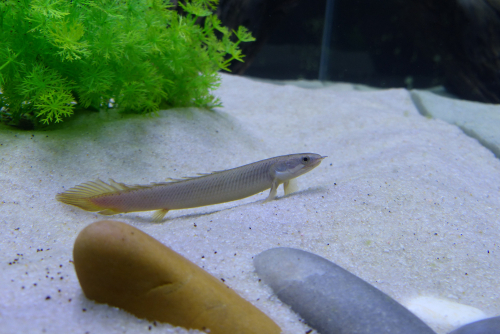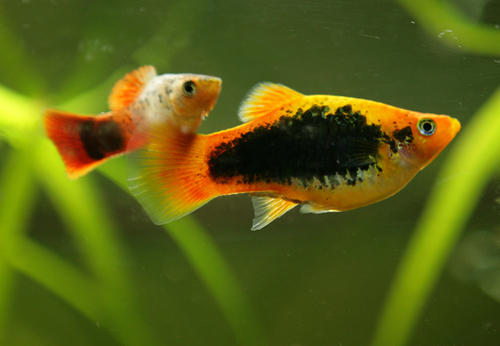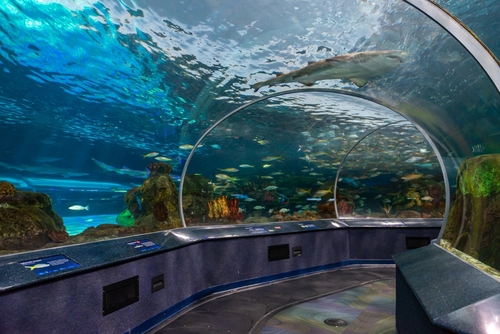You also shouldn’t miss these other top posts:
- Tips To Keep Your Aquarium Fish Alive and Thriving
- The Ultimate Guide to Setting Up Your First Fish Tank
- How to Clean a Fish Tank
As pet owners, we are responsible for providing our fish companions with a stimulating and engaging environment. One exciting way to enhance their habitat is by building an underwater tunnel.
In this comprehensive guide, inspired by an incredible video featuring Butters the axolotl, we will explore the step-by-step process of building a fish tunnel.
Whether you have axolotls, bettas, goldfish, or other aquatic pets, this guide will help you create an immersive and enriching underwater adventure for your beloved fishy friends.
Contents
Understanding the Importance of Enrichment:
Before embarking on the tunnel-building journey, let’s delve into the significance of enriching your fish’s environment. Like other pets, fish thrive when they have mental and physical stimulation.
A stimulating environment helps prevent boredom, encourages natural behaviors, and promotes overall well-being.
1. Research and Planning:

First, thoroughly research your fish species to understand their needs and behaviors. It would be best to prioritise factors such as swimming patterns, preferred hiding spots, water temperature requirements, and other unique characteristics.
This knowledge will serve as a foundation for designing a tunnel that caters to your fish’s needs.
2. Selecting the Right Materials:
Choosing appropriate materials is crucial for a successful fish tunnel. Opt for materials that are safe for aquatic environments, non-toxic, and won’t adversely affect water quality.
Glass or acrylic panels are commonly used for underwater tunnels, as they provide transparency for observing your fish’s journey while maintaining durability.
3. Designing the Tunnel:
Before diving into construction, carefully plan the design of your fish tunnel. Sketch out the length, width, and curvature, considering the available space in your aquarium.
It’s vital to ensure the tunnel is spacious enough for your fish to swim through comfortably, and consider incorporating twists and turns to mimic a natural underwater path, adding excitement and visual interest.
4. Construction Process:

Procuring the Materials:
Locate a reputable supplier for the glass or acrylic panels required for the tunnel. Measure the dimensions of your tunnel design and order the necessary materials, ensuring they are of the highest quality.
Cutting and Preparing the Panels:
Seek professional assistance or follow detailed instructions to cut the panels according to your design safely. It is crucial to handle the panels with care to avoid injury.
Once cut, sand and polish the edges to ensure they are smooth and won’t harm your fish.
Assembling the Tunnel:
Use non-toxic adhesives designed to join the panels for aquarium use. Take great care in creating a watertight seal to prevent any leakage.
Allow sufficient time for the adhesive to cure before introducing the tunnel to your aquarium.
5. Introducing the Tunnel to Your Fish:

With the tunnel securely in place, it’s time to introduce your fish to their new underwater adventure. Begin by acclimating them gradually to the tunnel, allowing them to explore at their own pace.
Some fish may immediately embrace the tunnel, while others require more adjusting time. Observe their behavior closely during this phase and ensure they show signs of curiosity and comfort.
6. Monitoring and Maintenance:
Regularly monitoring your fish’s interaction with the tunnel is essential to ensure their well-being. Observe their behavior to ensure they are comfortable and respond positively to the tunnel.
Perform routine maintenance by cleaning the tunnel and checking for any signs of wear or damage. Remove any algae or debris that may accumulate to maintain optimal water quality.
7. Enhancing the Tunnel Experience:
Consider adding additional elements to enhance the tunnel experience for your fish.
This may include incorporating live plants, artificial decorations, or adjustable lighting to create a visually appealing and stimulating environment. Always ensure these additions are safe and compatible with your fish species.
Conclusion

Building an underwater tunnel for your pet fish is a rewarding project that can significantly enhance their environment and overall well-being.
By following this comprehensive guide and drawing inspiration from Butters the axolotl’s incredible journey, you can create an immersive and enriching underwater adventure for your aquatic companions.
Remember to prioritize the safety and comfort of your fish throughout the process, consulting with experts if needed. Enjoy the joy and fascination of witnessing your fish explore their new underwater tunnel, providing them with a captivating and fulfilling habitat they can call home.
Note: Conduct thorough research, adhere to safety guidelines, and consult with experts to ensure the safety and well-being of your fish throughout the tunnel-building process.
FAQs
What materials should I use to build an underwater tunnel for my pet fish?
Use materials that are safe for aquatic environments. For starters, non-toxic materials like aquarium-safe silicone, acrylic, or PVC pipes are suitable for building an underwater tunnel for your pet fish.
How do I determine the appropriate size and dimensions for the underwater tunnel?
The tunnel’s size and dimensions will depend on your fish’s type and size. Consider the adult size of your fish species and ensure the tunnel is wide enough for them to comfortably swim through without getting stuck.
How do I integrate the underwater tunnel into the existing aquarium setup?
You can integrate the underwater tunnel into the aquarium by creating openings in the tank walls or attaching it to the existing decorations or structures. Ensure proper sealing and stability to prevent water leakage or collapses.
Are there any specific fish species that would benefit more from an underwater tunnel?
Fish species that are naturally curious, active swimmers, or known for exploring their environment, such as cichlids or loaches, may particularly enjoy an underwater tunnel.
Research your specific fish species to understand their natural behaviors and preferences.
Are there any risks or concerns associated with building an underwater tunnel for my pet fish?
While an underwater tunnel can be an exciting addition to your fish tank, there are some considerations. Ensure the tunnel doesn’t obstruct water flow or impede the fish’s swimming patterns.
Monitor your fish’s behavior to ensure they are comfortable and not stressed by the tunnel. Also, ensure the tunnel doesn’t create any sharp edges or potential hazards for your fish.

Ian Sterling, founder of Fishlab.com, began his aquarium journey over 30 years ago, driven by a deep fascination for fish and their diverse personalities. His website, Fishlab.com, is dedicated to making fishkeeping accessible and enjoyable, offering beginner-friendly guidance, expert insights, and a community for aquarists to connect and share experiences.


